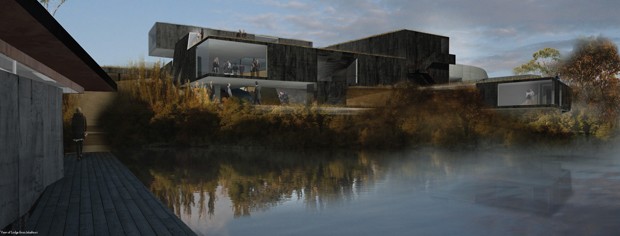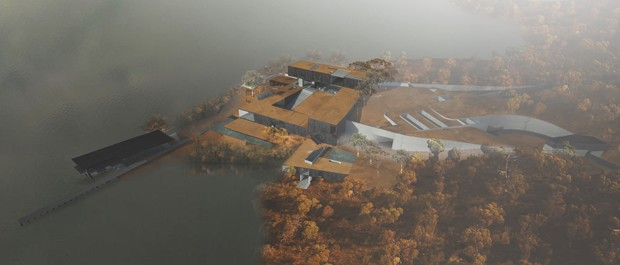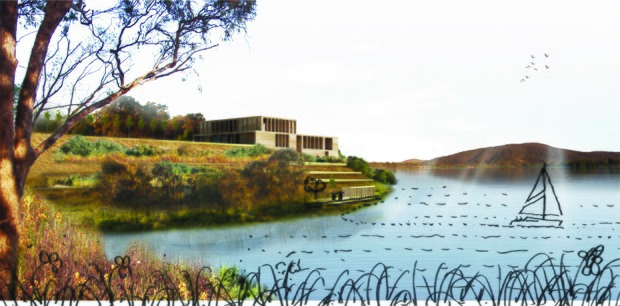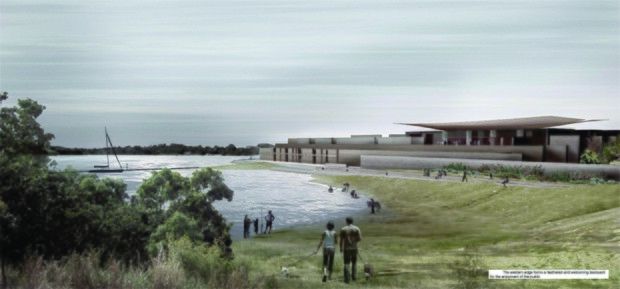The winner of the Lodge on the Lake competition to design the Prime Minister’s official residence has been announced.
Melbourne-based architect Jack Davies, New Zealand-based Nicholas Roberts and Copenhagen-based Henry Stephens – all Kiwis – have won the $80,000 first prize for designing a new split-level lodge that fits into a hillside beside Canberra’s Lake Burley Griffin.
Briefs for the competition stated the design must provide a comfortable and secure residential environment for the Prime Minister and his or her partner and family with accommodation for occasional guests and support staff.
Judges describe the design by Davies and his team as “casual, yet imposing”, with it being the most successful for integration of the built form with the landscape.
“It responsibly owns the landscape, is beautifully sited and celebrates the lake edge location.
“It also reflects the informal nature of contemporary Australian lifestyles and architecture, while providing attractive larger spaces for public gatherings.
 The winning design.
The winning design.
The winning design utilises concrete, local timber and recycled metal sheeting, with the architects saying the design suggested an acceptance of the Australian landscape’s inherent hostility.
Internal spaces can be changed and shows a gesture toward the nomadic Aboriginal mode of dwelling where built-form is occupied like land-form.
 A $20,000 second prize went to Professor Alan Pert, director of the Melbourne School of Design and founder of NORD), NORD team members Brian McGinlay, Helen-Anne Love, Mark Bell and Rod Kemsley, and environmental/structures firm Atelier 10.
A $20,000 second prize went to Professor Alan Pert, director of the Melbourne School of Design and founder of NORD), NORD team members Brian McGinlay, Helen-Anne Love, Mark Bell and Rod Kemsley, and environmental/structures firm Atelier 10.
 The second place design.
The second place design.
Third place with a $10,000 prize went to Monica Earl and Nic Moore, who compared their design to The White House.
 The third place design.
The third place design.
Canberra designer Narendra Kaley’s entry was commended.
Winning entries and the work of other finalists will be displayed at an exhibition at the Gallery of Australian Design in Canberra from August 15 to October 19.
The competition guidelines stated that the winning project may or may not be built, and the competition aimed to generate a range of solutions and stimulate discourse about Australia’s current and future identity.

